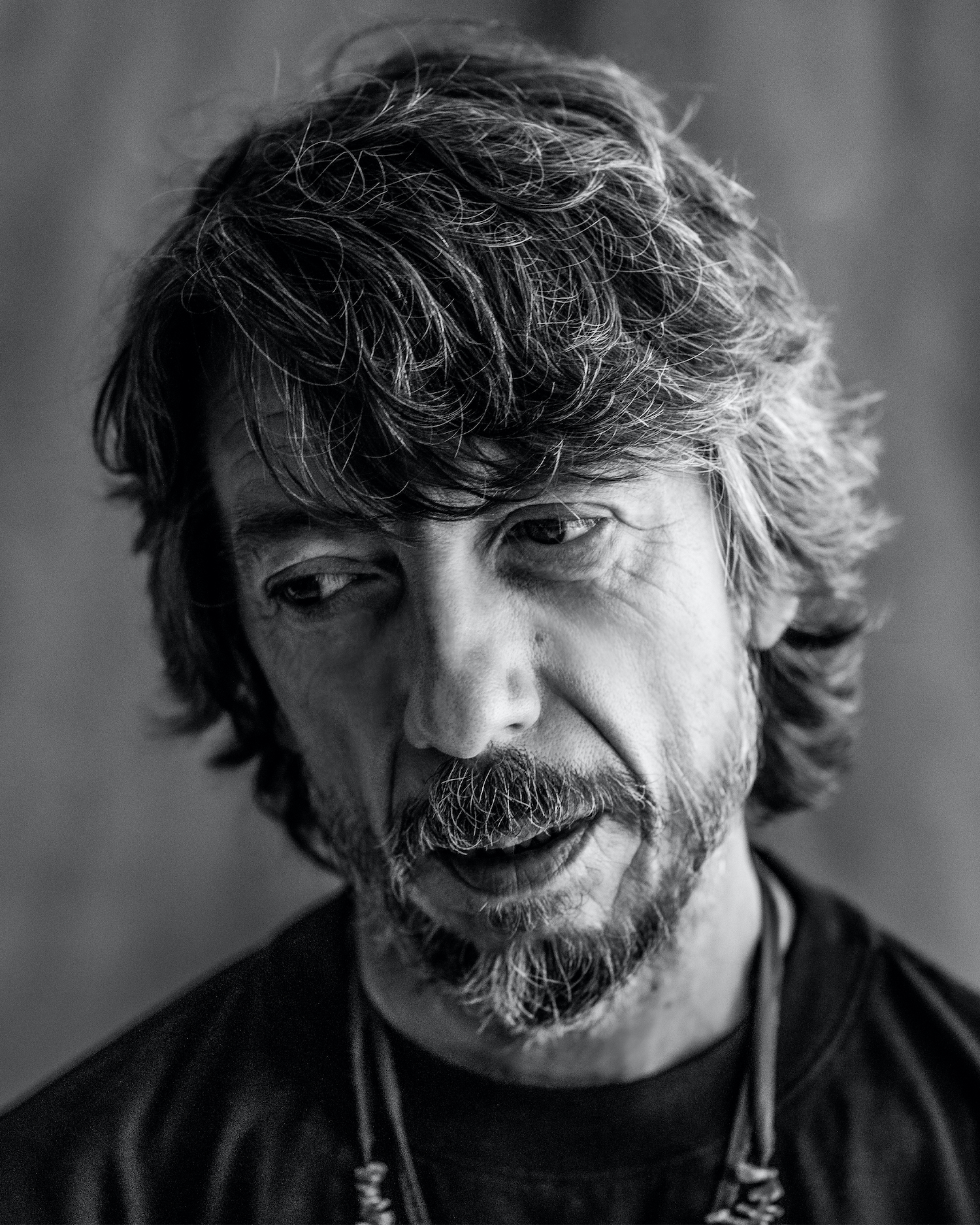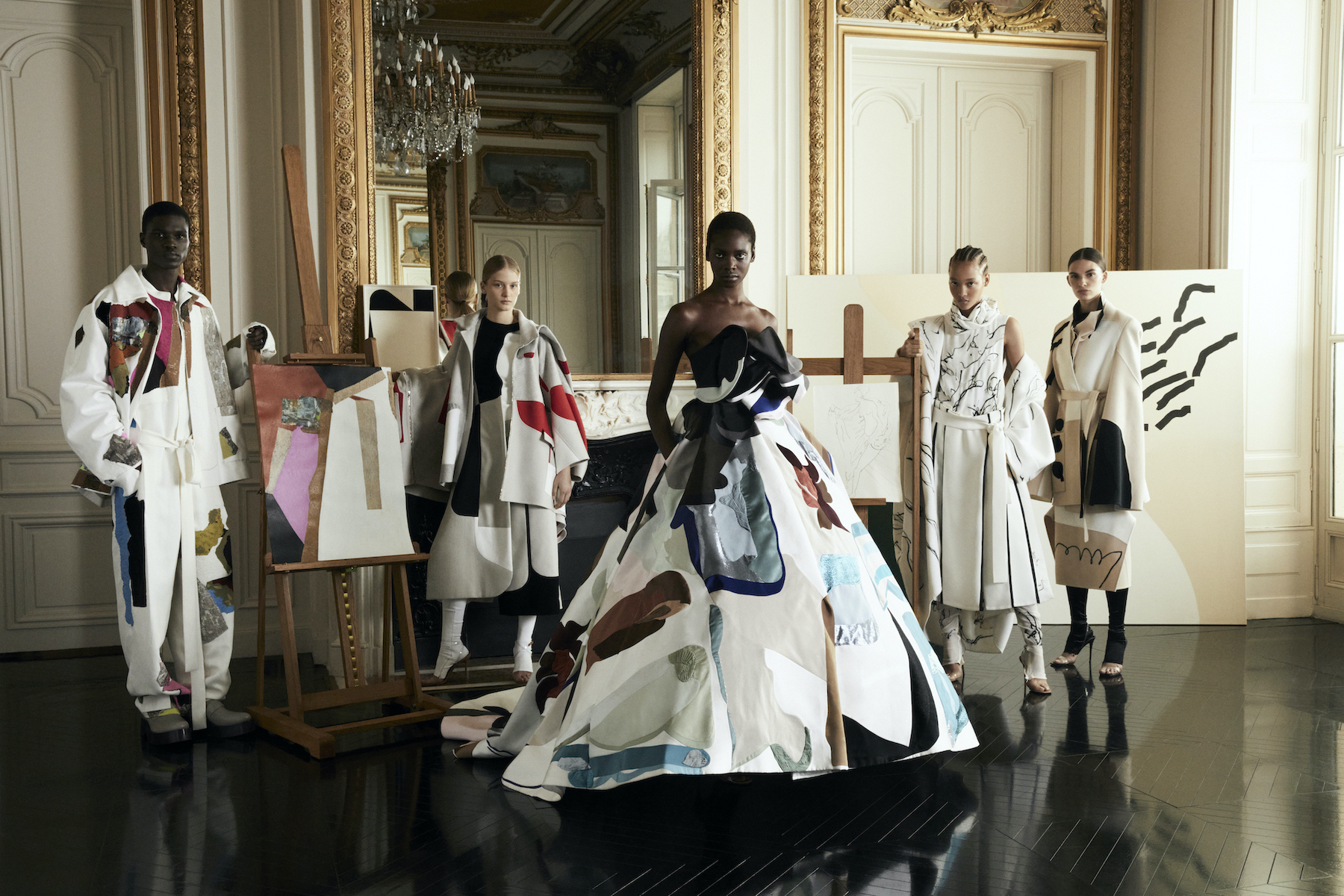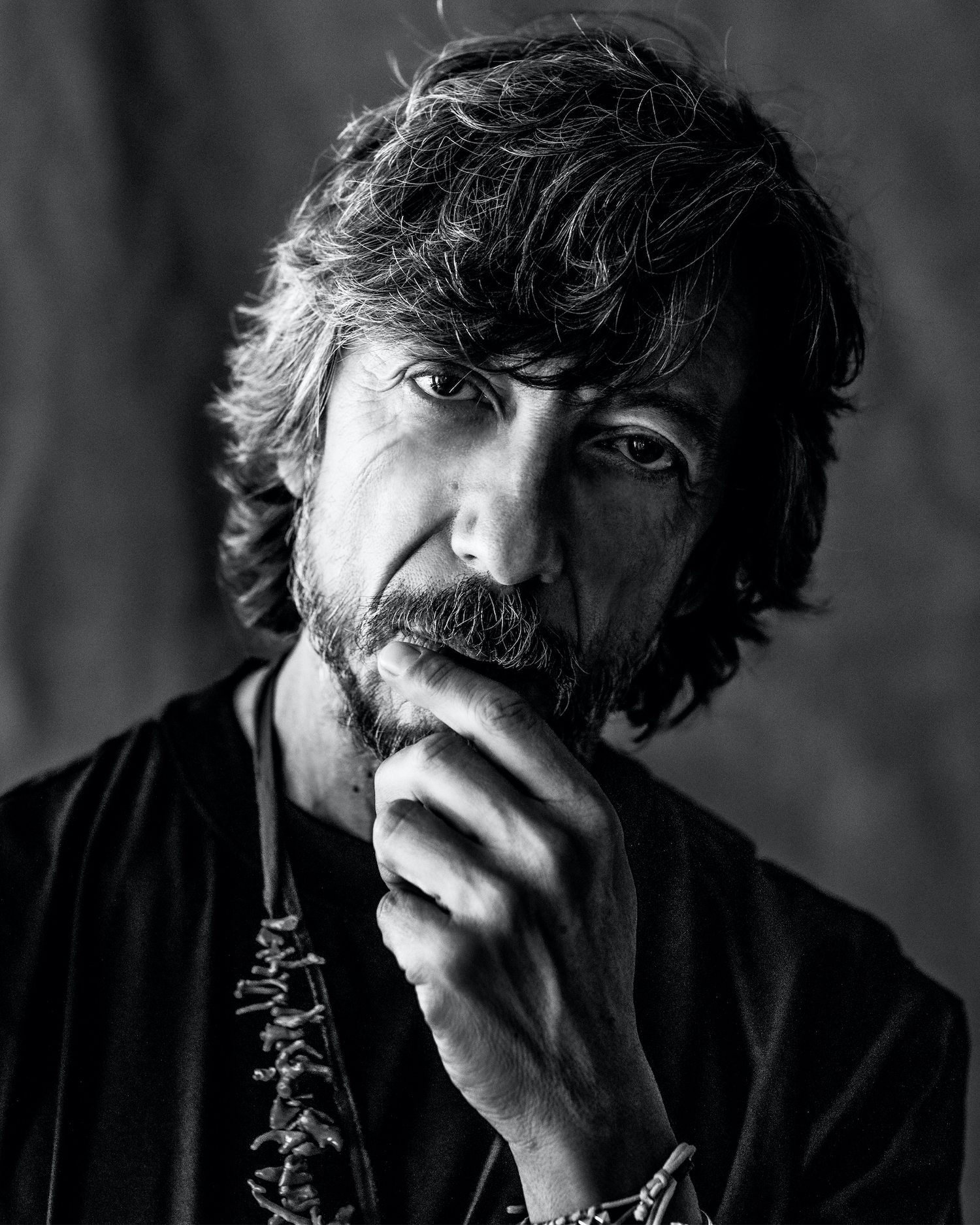Pierpaolo Piccioli & The Art of Valentino
In conversation with Schitt’s Creek’s Dan Levy, the creative director of the Italian fashion house explains how abstract paintings inspired his latest haute couture collection.

This story appears in the pages of our new winter issue, V133: now available for purchase here!
Art, defined as “something that is created with imagination and skill and that is beautiful or that expresses important ideas or feelings,” carries the power to connect and enlighten people from all walks of life. The same can be said about couture, fashion’s closest parallel to fine art, with creations that push the boundaries of fine craftsmanship and evoke a wave of emotions—strong enough to even make Céline Dion cry in the front row. It’s an innate medium of art where creativity and artistry are fused into a wearable garment, one that is unique to each user. For Valentino creative director Pierpaolo Piccioli, orchestrating a new assemblage of wondrous fashion this season started with his surroundings. Titled “Valentino Des Atelier,” Piccioli, along with Italian curator Gianluigi Ricuperati, tapped 17 artists from all over the globe to establish a dialogue between contemporary art and clothing art, birthing a collection that creates a kind of community of visionaries. With artists such as Germany’s Katrin Bremermann and Malte Zenses to New York’s Patricia Treib, their contemporary and evocative work helped bring the 84-look collection to life, culminating in a feat of savoir-faire that goes beyond the means of a canvas.
To better understand the deeper meaning behind couture itself, V brought Dan Levy, television icon and the first man ever to wear Valentino Couture, and Piccioli on a Zoom call to discuss the creative process behind the cherished project.

Dan Levy: Oh hello, Pierpaolo! Where are we heading to this evening?
Pierpaolo Piccioli: I just left the office, and [I’m] going back home! I live outside of Roma, so it takes me one hour [to arrive] there.
DL: Do you find that you like to be outside the city? Does that sort of remove you from the hustle and bustle?
PP: Yeah, I want to be far from everything. It’s [actually] the place where I grew up, [and] where I was dreaming to escape from. I never felt like I belonged to that place—the feeling of not belonging to something or someone makes you independent. I never felt [the need] to belong, so growing up, I felt that that kind of loneliness could be my strength.
DL: I mean, my dad chose to raise my family in Toronto, away from Los Angeles where he was working. And I think it’s the greatest gift he gave my family. We were able to live lives that were very separate and free from business, and I think that really kind of allows you the freedom to think for yourself, independent of what’s going on around you.
PP: I feel that kind of freedom of choosing to be exactly where you are. It gives you the feeling of being free.
DL: I think that is what’s great.
PP: As a kid, my parents didn’t really understand me, but they left me the freedom to live as who I [am] and that was enough.
DL: It’s more than enough! I think what you have done [at Valentino] has inspired so many people, myself included. There’s such an individualistic DNA to the clothes that you design. Anyone who wears your clothes, you see it on their face—they’re joyful.
PP: As a fashion designer, I want to use my voice to send messages and values that I believe in. Through the beauty of the clothes, you can invite people to express themselves however they want to be, wherever they want to be. As a designer, I never want to be [what] people expect me to be. Wanting to be very faithful to my identity and being different [became] a value. Now, as the creative director of Valentino, I’m still the same, more or less. I still feel as though every collection is an opportunity to tell something.

DL: Well, I think the show was an incredibly moving experience because you were confronted with the image of joy. There was such a slow pace to [it all which] I found to be quite emotional because we’re living in such chaotic times. What you showed, but didn’t even have to say, was how we just need to take a breath, walk a little slower, and look at the beauty in our lives.
PP: Thank you! That’s the best compliment for me. That was the idea—that all together, we could [let] change into the door that we were opening at the moment. If you breathe and leave that [chaotic] world for a moment, maybe you can witness that change.
DL: Couture is obviously a very technical thing but what does the idea of couture mean to you?
PP: It’s a celebration of uniqueness. I still feel that couture is the ultimate opportunity to express myself—it’s a way to be free, to satisfy my feelings and thoughts. Couture is also something that is timeless [and] about humanity—a celebration of the humans behind couture. Without those humans, you won’t have the right craftsmanship.
DL: You are such a genius when it comes to unexpected color combinations—it’s so incredible to see. Considering color plays such a formative role in the clothes that you design, how did you begin to put together the combinations in the last show?
PP: When you work with color, you work with what you see and let your emotions flow. When I had a picture in my mind, I worked with the fabrics and color teams in a very personal way. You can’t create new colors, but you definitely can create new combinations, new harmonies, which is what fashion, cinema, and art is for. New is new—new is what you don’t know, it’s [about what you’ve] never seen before, which is a nightmare for every creative. I don’t have an obsession [with newness], because I like the idea of seeing something you know, but with different eyes. That impacts you more than something that is completely new, but far from reality—just abstract. I have no interest in abstraction. I just like to see reality in a different way.
DL: On top of the color this season, you also reached out to select artists to collaborate on some pieces. For the show, it felt like you were expanding your community to involve artists that you wanted people to see and appreciate, and that was really touching. How did you go about selecting those artists to work with?
PP: It all came from a need for connection. When I started that collection, I felt like it was missing connection and an exchange of ideas. I [wanted] to create a factory of people that share the same values, with different points of view. So I selected some artists whose work I liked because, through the show, I wanted to create a movie with many cameos. I think cameos make movies richer, no?
DL: Oh, of course! It’s the details of it all. It’s the texture of what you’re wanting to say.
PP: [After] selecting these artists, I saw that they all share an aesthetic. I started to speak with them, some I met in Roma and some on Zoom, and what I realized is that we all have the same wants and needs. I felt that we could be a community because a community is all about sharing values, right?

DL: [Absolutely!]
PP: My challenge was to translate their artwork into something. Their work is one- dimensional and I had to make it three-dimensional, and not just apply the artwork on top of the most beautiful couture [pieces], but to make them come alive and capture the spirit of the artist.
DL: As someone who was in charge of inspiring a group of people who worked hard to bring a show to life that had my name on it, it was always crucial for me to make sure that everyone knew that they were integral to the process. Going backstage after the show and seeing the way that your atelier was equally as invested in the work and equally proud of it was a really lovely thing to see.
PP: That’s why I try to involve them in my vision. If they feel involved, they put their love, passion, and care [into the garments]. That’s why at the end of the show, you saw that emotion, because it was the end of the journey.
DL: I ended up forwarding the show to my mom to have her watch it and experience what I saw, because it was like medicine. Considering the emotional impact that your clothes have on people, what are some things that move you in that way?
PP: I’m always moved by the emotions of people, but even more so the small stories of people, not the big ones. That’s something that touches me. When I was talking to the artists, they [mentioned that] they [felt] represented by what I was doing. One of the ladies of the atelier said to me that when she was looking back at one of the dresses, she said it reminded her of her father when he was still alive.
DL: We’re both working in industries that balance artistry with commerce. We’re in a culture that seems to prioritize volume over quality. Perhaps this is just secret advice that I’m looking for, but how do you go about balancing expectations in this industry while never trying to compromise on the things that keep you inspired?
PP: I always keep in mind something that Diana Vreeland used to say, “You’re not supposed to give people what they want, you’re supposed to give them what they don’t know they want yet,” which I think is an interesting point.
DL: Well, thank you for inspiring all of us through your clothes!
PP: I’m so inspired by people like you—you bring purpose to my job. You are an example of self-expression—of how not to fear but be brave, bold, beautiful in your own way.
DL: The feeling is so mutual—I have so enjoyed this conversation and so look forward to hopefully seeing you and the beauty that you create soon!
This story appears in the pages of our new winter issue, V133: now available for purchase here!
Discover More
